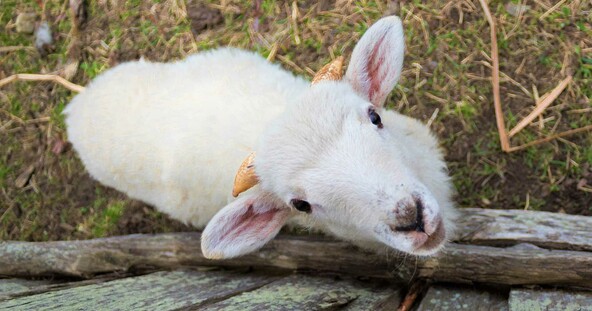Wampanoag Respect for Animals
In the 1600s, Wampanoag People believed that all creatures were equal. They did not keep any animals as pets. They respected all animals on earth and believed that they were free to live their lives the way that was natural for them. Wampanoag People believed that animals had lives and families that shouldn’t be needlessly interrupted.
Sometimes Wampanoag People cared for dogs, birds or other animals, but they were never treated as pets. The Wampanoag People might feed or care for the animals, but they were free to come and go as they wished. They often returned because the Wampanoag treated them with care and respect.
When the men went hunting, they showed respect for the animals. Whenever they took a life, the Wampanoag were sure to thank the Creator and the animal itself for giving its life so they could live. They conducted ceremonies of thanks every time they killed a deer or rabbit or fish.
The Wampanoag also showed their thanks by not wasting any part of an animal. In the 1600s, the Wampanoag used all parts of the animal for clothes, tools and food. This showed the Creator that they were glad for the gift he gave them. They would not misuse something as special as the life of an animal. If the Creator knew they were thankful, he would give them more gifts in the future. Today, Wampanoag People still believe this is true and always show their thanks for the animal gifts given by the Creator.
Pilgrim Animals
Can you imagine traveling for months on a ship crowded with people and goats, chickens, pigs or even cows? That’s what the English colonists had to do when they came to New England in the 1600s.
The English colonists relied on their farm animals for milk, meat and eggs to feed their families, and manure to make their gardens and fields more fertile. They knew they would not find these animals in America, so they brought the animals with them. They probably brought goats, pigs and chickens on Mayflower in 1620. Cows and sheep came a few years later.
Children helped tend these animals. They cleaned out the hen houses and gathered freshly laid eggs. Older children took the pigs to the seashore when the tide was low to feed on clams and mussels. Girls helped milk the goats and cows, and everyone helped to cut and bundle hay to feed the animals through the winter.
In the 17th-Century English Village at Plimoth Patuxet, we try to show how the Pilgrims lived. We keep farm animals like the ones they owned. Today these animals are called “Rare Breeds” because they are endangered. There aren't many of them left in the world today.
We also keep some of these Rare Breeds animals in our modern barn, called the Nye Barn. Below are some of the Rare Breeds you might see at Plimoth Patuxet.
Cows
The cows in the English Village are black Kerry cows and red Milking Devon cows. They aren't black with white spots like many of today’s cows. They are all black or all red.
Goats
Some of our goats are from San Clemente Island, which is off the coast of southern California. We also have goats that came all the way from New Zealand!
Chickens
The chickens in the English Village are called "Red Dorking" chickens.
